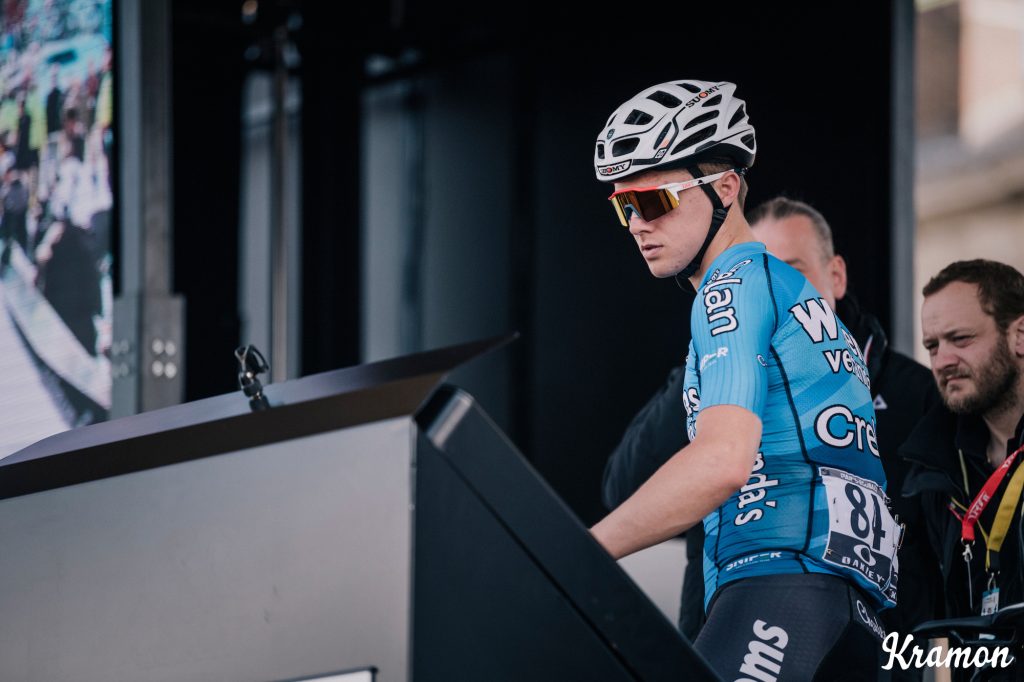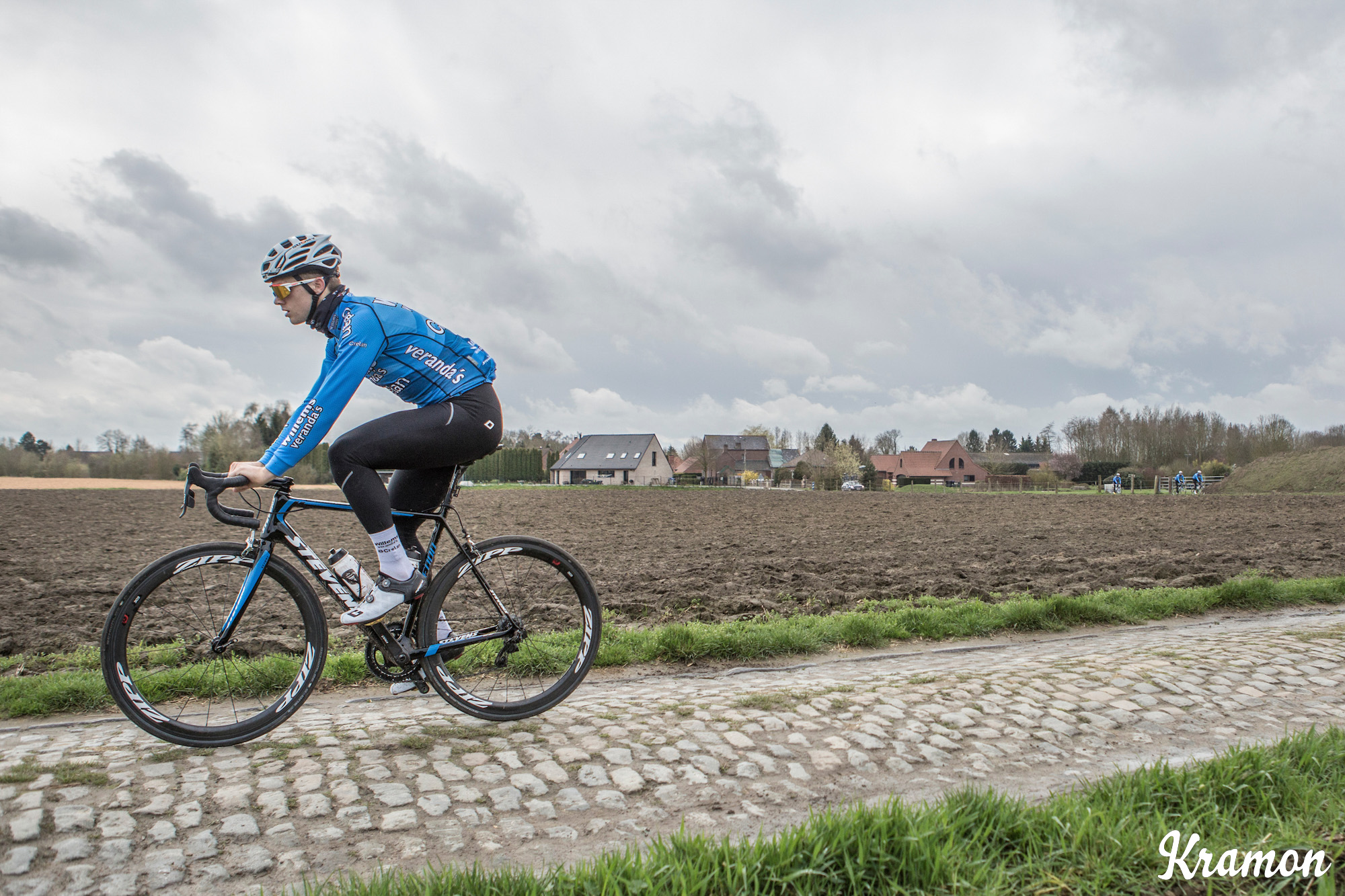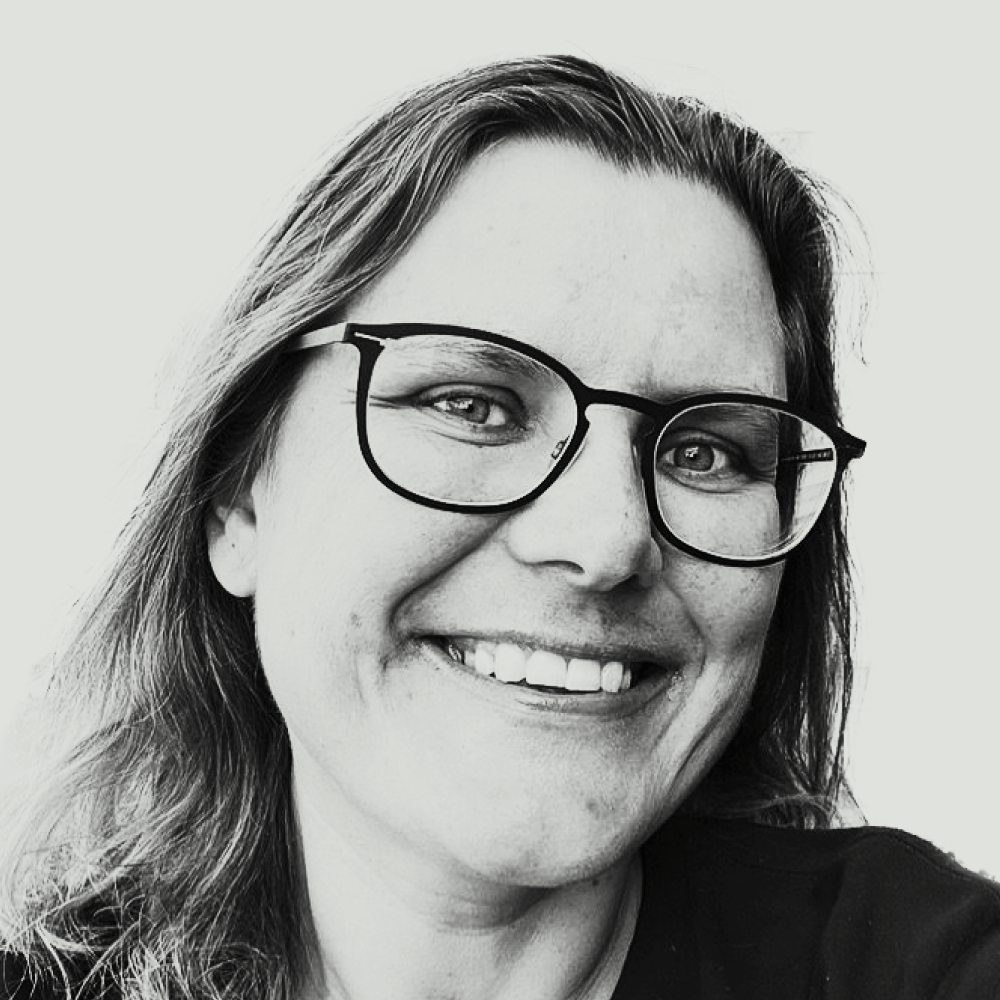Five years ago, partway through the 2018 Paris-Roubaix, news broke of a young rider who had been evacuated by helicopter to a hospital in Lille. On the second cobblestone sector of the race, near the small town of Biastre, 23-year-old Belgian rider Michael Goolaerts had suffered a fatal heart attack.
I remember visiting the Goolaerts family later that year, to pay my respects. I remember Michael’s bike, still covered in dust, sitting in the living room with his #84 race number still attached. The grief in the house was palpable. Pictures of Michael adorned the walls. His helmet was on the floor in front of an urn containing his ashes. A jersey with #84 and one single glove were framed on the wall.
Michael’s story never really left me. And so, five years after his tragic passing, I visited the Goolaerts family again in Belgium to hear about their experience of April 8, 2018, to learn about who Michael was, and how they are doing now that the peloton has moved on without their son.

Staf, Michael’s father, is a tall man, a former police officer who accompanied his son to many bike races. His eyes light up when he dives deep into the memories he has of those early years.
“I come from a typical football family and that’s why Michael played football too when he was still very young,” Staf says. “No matter his young age, Michael felt that he wanted another sport because he had noticed already that it was more important who you knew than what you can do.
“Michael then followed his older brother Kristof into the peloton when he was 14. For him it was a sport where it was more about quality than politics.”
The Goolaerts family became a cycling family, following Michael’s progress through the ranks from age 14 to a pro contract with the Véranda’s Willems-Crelan team of Nick Nuyens in 2017. He excelled at time trials at a young age, representing Belgium at various championships.
“Michael was a crazy one on the bike when he was younger,” Staf continues. “He finished in second place so often. He would always go full gas from the start. His trainer Ludwig Willems once told him that he had to wait until at least halfway into the race before attacking. Lap after lap he would look at the trainer and me. He was checking if he could already attack and we shook our heads.
“Many riders were already up front and we knew it must be torture for him staying in the peloton. One lap we nodded yes and he went, joined that group, and won the race.” Staf smiles at that memory.
Michael’s mother Marianne is also clearly proud of who her son was. “Sports were his life,” she says. “I didn’t really care all that much about his results as long as he came home in one piece. I was prouder of how he always helped others win or helped them when they had crashed. He was happy to help others. That’s who he was.”
Crashes are part of the job in cycling but the Goolaerts family could never prepare themselves for what happened on April 8, 2018. It all started with happiness because Michael was selected for Roubaix alongside Wout van Aert, his childhood hero Stijn Devolder, Dries De Bondt, Aidis Kruopis, Stijn Steels, and his childhood friend, Senne Leysen. His selection for his first elite Paris-Roubaix came after a strong Spring Classics season where he was part of the breakaway in the Tour of Flanders the week before.
“‘This will be the year of truth’ he said to us that winter,” Marianne recalls. “He was 23 and wanted to take that step up. It was a contract year too. He wanted to motivate himself to really show something that year. Roubaix and Flanders were his dream races. They were holy days and he was so ready for them.”
Staf and Marianne remember everything from the week leading up to Paris-Roubaix. How Michael didn’t want to help gardening because it was the Holy Week and he couldn’t fatigue himself. How he told a friend to quit smoking because it kills you. How he said that if he would win Roubaix, he wouldn’t come back home for two weeks straight. Or a WhatsApp message about how he felt his legs were great for that day. Just ordinary remarks that became so important because they became last words.
“We went to the start of the race in Compiègne,” Staf recalls. “We weren’t planning to do that. We planned to go to a cobbled sector closer to home but of course we were happy we decided to go to the start.
“We would always wait somewhere at the back, never first in line in front of the team bus. Michael came to see us. We chatted and he was excited about the race. He was told to stay with Wout until Arenberg and then had a free role. His mother tapped him on the bum as she always did and he told us ‘tot straks’ (‘see you later’). I am still waiting for that.”
“I saw him on the first sector – he smiled at me and that was the last I saw of him,” Marianne adds. Tears roll down her face as her three-year old granddaughter Chaëlle hugs her. She is a ray of sunlight in a dark home.
“We went to our next stop but we didn’t see him anymore,” Staf continues. “There had been big crashes so everything was in pieces. Then the messages came through via our phones. They had said on Belgian television that Michael had been evacuated by helicopter. A little bit later our son Kristof read online that Michael had suffered a cardiac arrest.”

Marianne went to a local policeman hoping for more information but he knew nothing. It took endless minutes before they found out where Michael had been taken.
“Staf immediately thought he was dead but I kept hope while we sped to Lille,” Marianne says. “I hoped he had broken a hip or something and that everything would be OK. In the hospital it took so long before we could see him. The doctors didn’t want to say anything. I asked them over and over again if he was dead. I was in that small waiting room and felt so alone.
“We finally got to see him. I think it was 7pm or something. He was on life support and then they tell you there is no hope anymore. I am a nurse. I know what brain-dead means. I went to Michael and told him he could go, that all who loved him so dearly were here and he could go. It hurt then and it hurts now,” she whispers, barely audible.
The memories are five years old but as vivid as if they happened yesterday. The pain in the Goolaerts house is just as palpable as it was five years earlier when I first visited them. There are two big pictures of Michael on the wall and two framed jerseys. His helmet lies on the floor and a box with newspaper clippings of every year he raced sits next to the table. The race bike with the #84 plates is no longer in the living room but in his bedroom upstairs.
There are bright moments with Chaëlle, named after Michael, as a daily highlight. The young girl knows a lot about her uncle. Her father Kristof talks about him, and her grandparents, ‘make’ and ‘vake’, do too. Chaëlle’s bright brown eyes take some of the pain of the loss away but the memories of losing Michael, and the way the authorities in France treated the case, leave a bitter taste.
“It took 12 days before we got Michael back,” Staf says. “The authorities made this all so much harder for us. A young man had died and then the police came in. I know how that works because I was a policeman myself. The authorities seemed adamant to find the cause but there was no cause. They had done the autopsy, toxicology, everything. It was just bad luck but still it took 12 days before we finally saw him again.”

Paris-Roubaix is coming up this weekend. Cycling fans and journalists, riders and sports directors all look at the weather report. There are recons, pictures of cobbles, and desolate French farm roads. It’s one of the biggest races on the calendar but for the Goolaerts family it’s a day they dread every year.
“I can’t watch races anymore,” says Staf immediately when I ask him what he will do Sunday. “I hope it’s a sunny day so I can work in the garden. Or I will go upstairs to watch something else. Nick Nuyens, his former team manager, invited us to a race as VIPs the year Michael died. The first time I saw the peloton I stepped away from the road. I am not watching again. I can’t, not in real life and not on TV.”
“I need to watch the race, every race,” says Marianne. “The Spring Classics are the hardest period but, in every race, I see riders his age and you always wonder what Michael would have done. There are no answers to that. Yet I still want to see the races because unconsciously I am still searching the peloton for Michael.
“He was such a great athlete to watch. He had so many friends in the race. I want to see every race to stay connected with his world. In my world, Flanders and Roubaix are his races and they will forever be. And when they finish on the velodrome I think, ‘Oh Michael, another year gone.’”

“This sport is still a beautiful sport when everything is going well,” Staf adds. “I wish the best to every one of his colleagues and to everyone enjoying watching it but for us that life has ended. We are alive but not really living. The pain of a life without him is just too big to carry.”
Cycling carries on. The peloton continues racing, albeit one rider short. Some riders kept in touch with the Goolaerts family but most of the cycling world moved on. For the parents of the rider left behind it’s important his name is still mentioned. That his name isn’t forgotten.
His name was Michael Goolaerts. Give him and his parents a thought this Sunday because only those who are forgotten truly died.
José’s poem
In the aftermath of Michael Goolaerts’ tragic death, José wrote a poem “to give words to my feelings, to the feelings of many cycling fans watching.” The Goolaerts family ended up printing it on Michael’s funeral card.
An English translation of the Dutch poem follows:
A bike that will never need cleaning again. Dirty, filthy even, without an owner.
A shirt that will never be worn again. Shoes never doing another step.
Glasses never shielding brown eyes ever again.
A heart rate monitor indicating zero.
Pedals not turning.
A training schedule incomplete.
Memories of a life, a rider’s life.
A life ending when it had only just started. Started with a dream.
A life before the race.
No life after the race.
Forever DNF.
Forever together in the race with his friends. In hearts.

Did we do a good job with this story?

